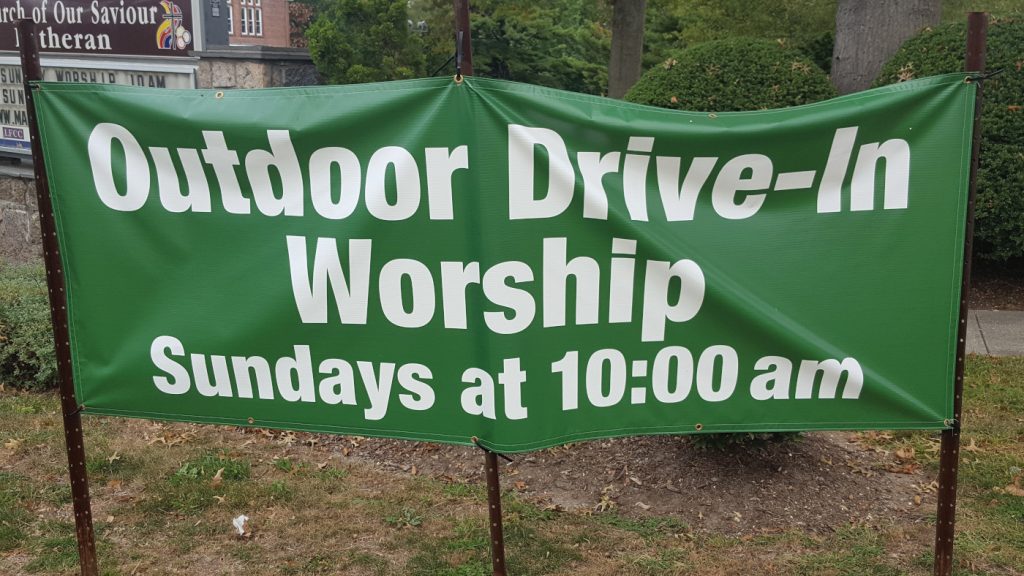Worship leaders have to juggle many concerns.
The novel coronavirus (COVID-19) continues to wreak havoc in nearly every aspect of our lives. Many businesses—both large and small—have suffered tremendously due to the virus. Governments have forced many businesses to close during the pandemic, even as select businesses have been deemed “essential,” and thus, remained open. Although many locally owned businesses were forced to close, Amazon and Walmart are two businesses that have benefited from COVID-19. However, even those giants have had to make changes in order to comply with government decrees whose purpose is to keep people safe.
In the time of COVID-19, millions of people are enabling Amazon to dominate competitors to the point that, in my opinion, people have developed what I call “The Amazon Effect.” Amazon has found a way to make shopping and payment transactions occur nearly effortlessly. The effect of this is that people want an Amazon type of experience from other businesses, as well. The experience is enjoyable, on our time schedule and easy.
As noted, big-box stores like Walmart are also thriving during the pandemic. Walmart has told us that its stores are sanitized routinely to keep people safe from the virus. Knowing that, we can presume that Walmart shoppers prefer—or, at least, are willing—to do in-store shopping with other people. (Many of these shoppers prefer to purchase items they can touch and see.)
I am certain there is overlap among Amazon and Walmart shoppers, but these two approaches are instructive nonetheless. In summary, there are people who are not ready to interact with people in person and, thus, prefer to shop online; conversely, there are people who are ready to interact with other people in public and, thus, prefer to shop in person.
Many of these shoppers are people who practice a faith. As houses of worship (HoWs) reopen, worship leaders are recognizing the two types of people distinguished above: (1) people who prefer to worship online in their private, secure space and (2) people who are ready and eager to worship in a physical location with fellow congregation members.
In the Christian faith, a challenging factor among leaders and congregants is interpreting a Bible verse (Hebrews 10:25) that states, “Not quit meeting together, as some are doing. We need to keep encouraging each other. This comes more and more important as you see the Day getting closer.” Arguably, this scripture—and, in particular, the word “together”—gains new meaning in the time of COVID-19.
With verses like that in mind, HoWs of nearly every size are trying to develop ways for people to continue “meeting together.” The most prominent way is to offer worship experiences inside the sanctuary for those who desire to worship in a physical location while, simultaneously, offering an online worship experience for those who prefer to stay at home.
The response to HoWs’ reopening plans among congregants has been good, overall. However, there has been a lot of controversy about governments that have tried to block HoWs from reopening. Many congregants do not want the government to interfere with their worship. The Good News is that people of faith want to engage in a
fresh, new worship experience.
Worship leaders are trying to understand and manage many things: the actions of some governments to restrict in-person religious activities, the growing hostility and “fact-checking” on social media, and even new ways of making financial transactions online. Their initial conclusion is that they must develop new ways to conduct and manage ministry in order to thrive in our difficult times and beyond. The effects of COVID-19 and the global shutdown might last longer than we currently understand. I have spent a lot of time thinking about the challenges that HoWs are experiencing in this restless era, and I find myself wondering what HoWs will look like after the pandemic.
Drawing from my conversations with HoW leaders (as well as making assertions of my own), I present the following prognosis for how worship leaders will
serve their congregants now and beyond the time of COVID-19. They will do the following: (1) create a fresh, new look in the worship space; (2) promote a sanitized worship space; (3) enhance security measures; (4) improve the experience for online worshippers; (5) develop small-group opportunities online; (6) use popular
social-media platforms for promotion; (7) develop an app; (8) revivify the website; (9) offer easy-to-use portals for online giving; (10) use management software.
Certainly, there are additional ways to interpret these times than the information provided here. I believe that HoWs will survive and, eventually, thrive. This is Good News for people of faith, as well as for those of us who work with HoW clients. Next month, in Part 2, I will expand upon the 10 items in my prognosis.
To read more from Sound & Communications, click here.
